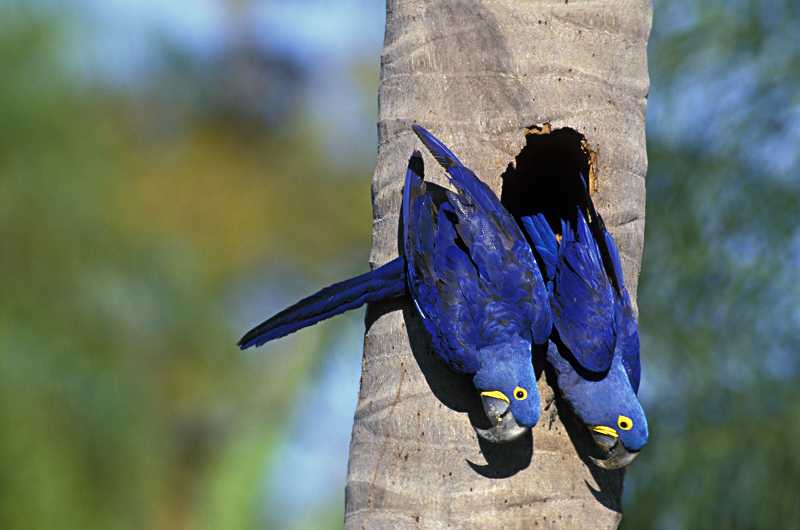Wild Hyacinth Macaw (Anodorhynchus hyacinthinus) populations were reduced to about 3000 birds between 1970 and 1990 when trapping was heaviest, then further affected by hunting and widespread habitat destruction. Currently, five thousand individuals are located in the Pantanal. There have been population declines in E Amazonia and Minas Gerais from an estimated 1500 individuals in 1986 to 1000 in 2003.
The World Parrot Trust began supporting projects that protected remaining populations in 1990 and by 2008 funded studies on the effects of trapping, breeding ecology and other research. The WPT has supported confiscated birds caught in trade, provided veterinary care, food and supplies for rescued birds, led work in Bolivia that has focused on monitoring and protecting nest sites, helped provide education and ecotourism opportunities to local communities and funded research on habitat degradation, population trends and limitations to breeding success. A fire specialist provided forest fire prevention, response training, and equipment in 2019 to residents of the area.
Status: IUCN Vulnerable / CITES Appendix I.
Population: 6500 individuals
Range: Three isolated groups are in central South America: NE Brazil, central E Brazil, S central Brazil to Bolivia and N Paraguay.
Natural history: These macaws are found in areas rich in nut-bearing trees and shrubs, rocky, steep valleys with deciduous woodland, gallery forest and Mauritia palm swamp; in the Pantanal gallery forest with palm groves. They are seen in pairs, family groups or small flocks. Foods include the nuts of various palms; also fruit and Pomacea molluscs. Breeding is from July to December; nests are in tree cavities in the lower Amazon and Pantanal; in NE Brazil cliff burrows.

